Guide to Growing Peas & Beans

While peas can be sown, grown and harvested for nearly all the cooler months in most areas,
beans are a crop that needs the luxury of the warmer months to achieve success.
Now is a good time to start a succession of sowing peas to ensure a continuous harvest
for the months ahead. However, your beans will have to wait at least another month to six weeks
to ensure that the ground temperature is a lot warmer than it is right now.
Peas prefer growing in the sunniest spot in the garden in humus rich free draining soil with the pH on the slightly higher side. Preferably where you haven’t grown them for a couple of seasons and where the ground has refreshed from any diseases that might have lingered. If you’re unsure of the pH, give the ground a generous dusting of Dolomite Lime along with a well-balanced general fertilizer
and dig it lightly into the topsoil layer.
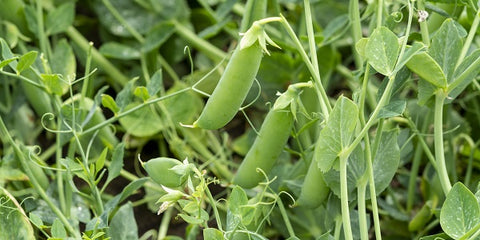
You can swell the peas before sowing them by soaking them in water. They’ll swell to nearly twice their size, giving them a day or two head start if you had sown them dry into the ground. Sow them 2.5 cm deep and 10 cm apart. Dwarf peas will need some support to 70 cm, with climbing peas doing better with a net or a tepee structure up to 2 metres high. Your dwarf pea rows can be as close as 45-60 cm apart, but for taller climbing peas, give yourself up to 1 metre between rows both for ease of movement for you and for airflow.
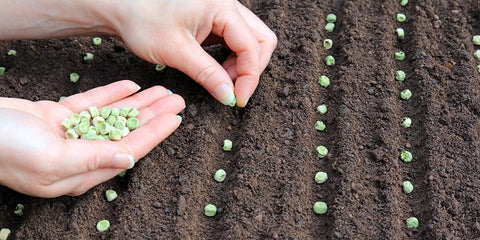
Dwarf peas will take approximately 10 weeks for the first flowers to appear and then another 2 to 3 weeks for the pods to form and ripen, with climbing peas you could add another fortnight onto this time frame.
As seedlings, peas are vulnerable to slugs/snails and to birds pulling them out of the ground but once they're firmly anchored and starting to grow up their support, they’ll be fine.
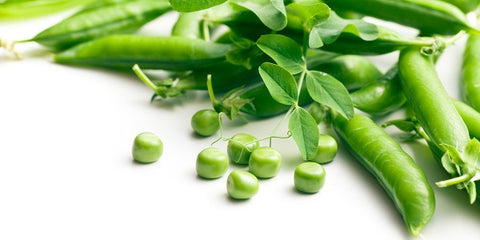
When picking pea pods, do it gently as the vines can be easily damaged and the stems bent. I find it easiest to hold the pod in the palm of the hand and use your thumb to snap it cleanly from the vine, rather than just pulling them. Pea flowers are edible and make a colourful garnish or to brighten up a cocktail. To ensure a continuous harvest for the months ahead, a flush of pea pods will last about 3 weeks, plan your garden and put a new row in every 3 to 4 weeks. Peas are relatively disease free, but can be susceptible to powdery mildew if put under stress from a lack of water or when they’re nearing the end of their picking.
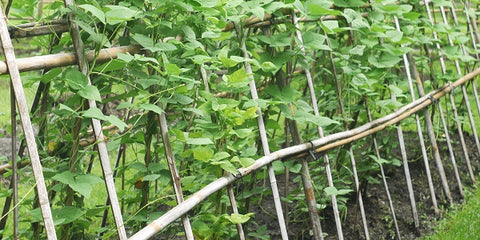
Beans prefer warmer soils in which to germinate. Soils that are still too wet and cold are the main reason for seedlings to fail. Sow your bush Beans 2.5 cm deep, and 15 cm apart in rows or beds. Climbing beans can be sown in a single row 15 cm apart next to their support structure. It's worth holding back on sowing Soy beans, Lima Beans and Yard Long Beans for a further few weeks even into late November as they require even greater soil warmth to germinate and grow vigorously.
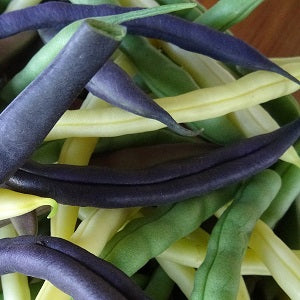
All beans prefer humus rich free draining soil and, once the seedlings are established, are better to be watered thoroughly once a week rather than lightly every day. Having the foliage wet too often encourages fungal disease to settle in. This is evident in dark-coloured lesions/blotches or rust-coloured spots appearing on the leaves or leaves yellowing and falling off. Wilting leaves indicate that the plants might be stressed or weakened from a lack of water. A decent soaking of the soil is called for, preferably in the morning rather than at night.
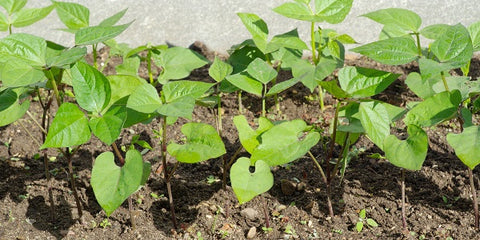
Bush beans will generally stand upright by themselves, but can get top heavy and be blown over in windy conditions - some support or side strings are worth considering. They usually set pods and ripen in 55 -60 days from sowing, with a flush of pods lasting up to 3 weeks. For a continuous harvest through the summer months, consider putting in a row every 3 – 4 weeks. Pole or Runner Beans will take 60 to 70 days
to set their first pods, with a flush also lasting 3 – 4 weeks.
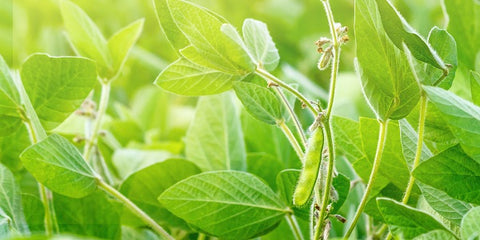
Soy beans are late to mature with sturdy stems and don’t usually require any support.
Yard Long Beans can grow up to 4 metres tall, but are quite happy to keep growing horizontally
along a fence or pergola if they outgrow the structure they’re next to.
The name Yard Long is a bit of artistic licence, and you’re doing well with 60 cm long pods.
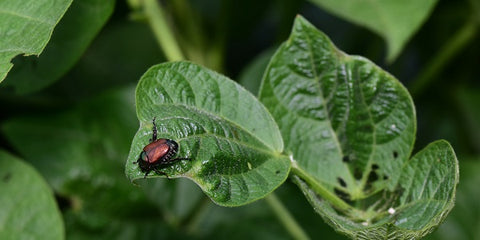
Beans are a firm favourite of many insects wanting to make a meal of them:
-
Slugs, snails and ground dwelling beetles will chew holes in young seedlings. Slug bait, removing plant litter and lightly dusting Diatomaceous Earth down your rows will help control them.
-
Leaf Miners can skeletonize leaves, if you’re not wanting to spray them with an insecticide then just remove damaged leaves and dispose of them elsewhere.
-
Aphids like to suck the plant juices out of the stems and leaves, causing the leaves to curl under and be deformed. The evidence of them is the shiny sticky honeydew they leave behind and the black sooty mould that follows. However, they’re easy to control with a mild soap spray and a bit of persistence.
-
Whitefly can also be a nuisance, and are frustrating when you see a cloud of them when disturbed. However, they don’t actually affect the yield of the plants or do much damage to the pods. To control them, consider putting up coloured sticky traps or encourage beneficial predator insects into your garden.
Let Mother Nature fight the battle for you.






















































